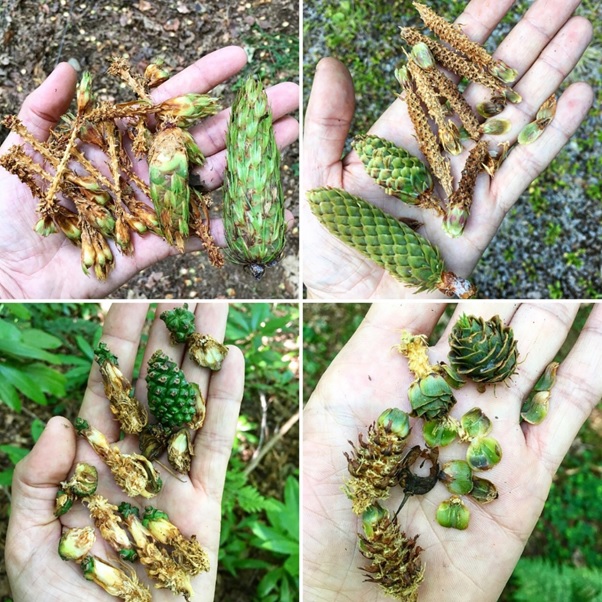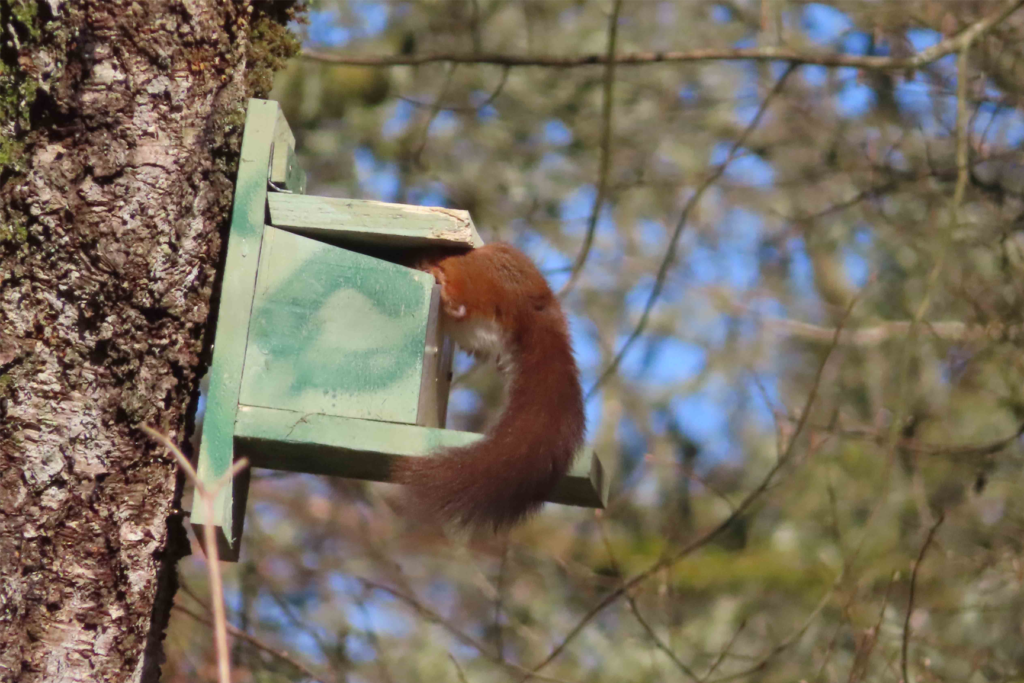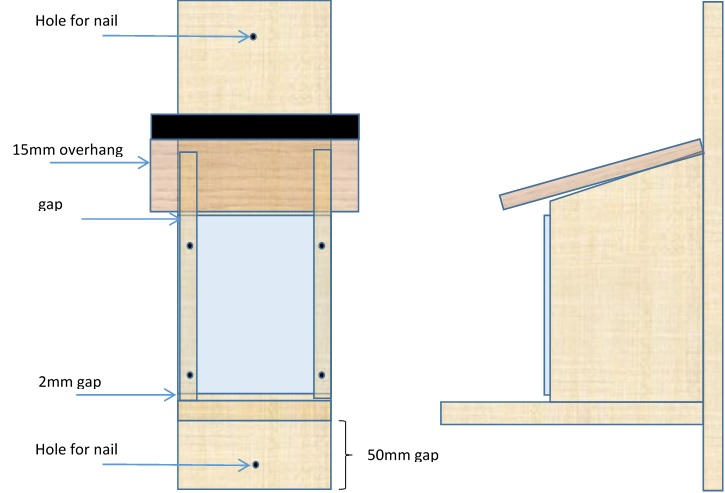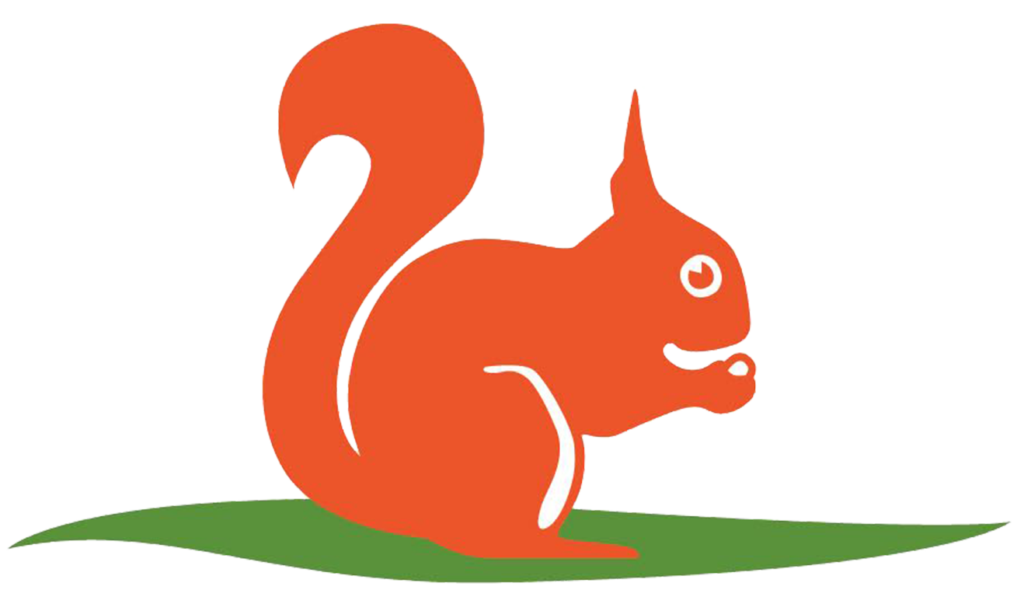Supplementary Feeding
Many people kindly provide supplementary food for red squirrels that visit their garden. While this may provide a useful food source for red squirrels, there are several risks associated with providing supplementary food. These risks include disease, predation by domestic pets, road deaths, and increasing the population to numbers higher than the natural carrying capacity of the local habitat. The information provided below will help ensure that these risks are minimised.

When to feed and what to use
It is important to remember that the food you provide for red squirrels should be supplementary, and not take the place of their natural food sources. Small amounts of food should be put out every 3-4 days. Hazelnuts in their shells are one of the best foods to provide, but other foods including wheat, linseed, or pine nuts are also useful. Fruits such as apples also make a welcome addition. Peanuts and sunflower seeds can be used but are of lower nutritional value. We do not recommend using peanuts exclusively. Evidence is starting to suggest that peanuts may cause liver damage in red squirrels as they can contain a substance called aflatoxin. If you do use peanuts, please make sure they are labelled as ‘Aflatoxin free’.
A variety of food helps to relieve problems such as calcium deficiency which is particularly an issue for young squirrels. Providing bone meal, a cuttlefish bone, or even pieces of carrot can help protect against this. ‘Collo-cal D’ can also be added to a dish of drinking water.
Feeding solely on peanuts is particularly attributed to calcium deficiency, and sweet dried fruits such as raisins and sultanas can also lead to this condition.
Be careful – It is important not to overfeed, and all uneaten food must be removed from the feeding site, not allowed to accumulate. Providing too much food could result in artificially increasing the number of red squirrels that can be supported by the natural habitat in your area. This can lead to hardship if the supplementary food source is interrupted, for example by your summer holidays or if you move home.

Feeders and their location
There are many relatively inexpensive squirrel feeders on the market. If you would like to try your hand at making your own feeder, we can provide you with a template and instructions that follow an approved and tested design.
Cats account for a high number of fatalities in gardens visited by squirrels. Feeders and feeding sites should be located as high as possible, out of the way of cats. To avoid encouraging squirrels to cross open ground, do not place feeders in isolation from trees or other cover. Do not locate feeders where they are likely to attract squirrels to crossroads.
Providing supplementary food can encourage birds and squirrels to visit an area more often than they would naturally do so. Where squirrels and birds are attracted to a feeding location, there is an increased risk of disease. Droppings and remnants of old can harbour viruses and bacteria, such as Salmonella and Coccidiosis.
In order to minimise the risk of disease, it is important to thoroughly clean the feeders regularly by scrubbing them and removing all organic deposits such as food waste and droppings. You should also disinfect feeders and feeding stations with either Trigene, Virkon S, or an antibacterial household disinfectant.
Always wear rubber gloves when cleaning feeders to reduce risks to you.
grey squirrels and the risk of squirrelpox virus
Unfortunately, supplementary feeding may also attract grey squirrels. Grey squirrels can transmit Squirrelpox Virus to red squirrels. This virus does not affect grey squirrels, but is invariably lethal to red squirrels within 15 days following onset. Close proximity of red and grey squirrels at a feeder can significantly increase virus transmission.
Supplementary feeding should be ceased if a grey squirrel is seen in the area. Feeding should only be continued if you have the intention to control the grey squirrel; feeding helps to draw grey squirrels to a fixed location where they can be trapped.
If feeding in the presence of a grey squirrel is being conducted for this purpose, please ensure that feeders/feeding sites are regularly disinfected and old food is removed.
Please be vigilant and report any squirrels with possible squirrelpox virus symptoms; squirrels will become lethargic and uncoordinated, with swelling, lesions and ulceration occurring around eyes, mouth, nose, paws and genitalia.
Keep us informed
Simply letting us know how your squirrels are doing makes an excellent contribution to red squirrel conservation. You can submit sightings directly here. If you regularly see red squirrels in the same spot, you need only update us every six months or so. Please report any grey squirrels to us immediately. Regular sightings allow us to monitor red and grey populations across the region, and they contribute towards valuable research.
suppliers of red squirrel food
Birds Bistro, The Old Forge, Penruddock, Cumbria, CA11 0RD.
01768 483100 www.thebirdsbistro.co.uk
Poltross, Unit 8D, West End Ind. Est., Haltwhistle, Northumberland.
01434 321111 www.feedthebirds.co.uk
www.cobnuts.co.uk – supply hazelnuts

